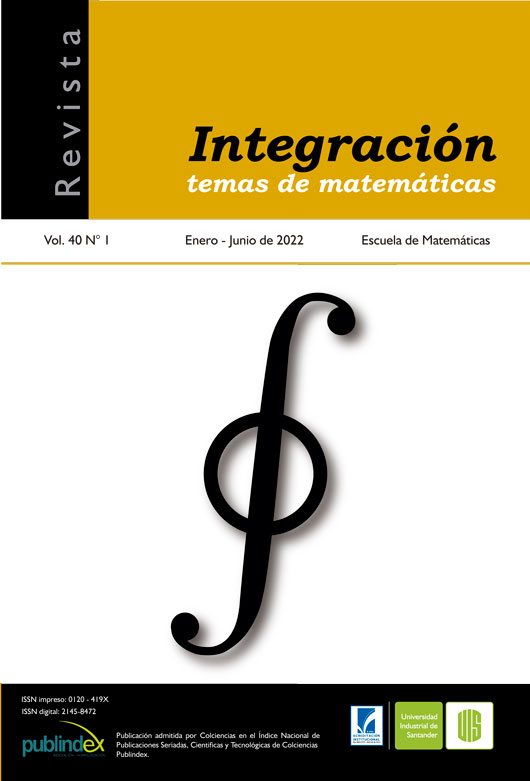Published 2022-03-01
Keywords
- Power residues modulo prime,
- quadratic residues,
- Legendre symbol,
- norms of field extensions,
- irreducible polynomials
How to Cite
Copyright (c) 2022 Revista Integración, temas de matemáticas

This work is licensed under a Creative Commons Attribution 4.0 International License.
Abstract
Let q be a prime. We classify the odd primes p ≠ q such that the equation x2 ≡ q (mod p) has a solution, concretely, we find a subgroup L4q of the multiplicative group U4q of integers relatively prime with 4q (modulo 4q) such that x2 ≡ q (mod p) has a solution iff p ≡ c (mod 4q) for some c ∈ L4q. Moreover, L4q is the only subgroup of U4q of half order containing −1.
Considering the ring Z[√2], for any odd prime p it is known that the equation x2 ≡ 2 (mod p) has a solution iff the equation x2 −2y2 = p has a solution in the integers. We ask whether this can be extended in the context of Z[n√2] with n ≥2, namely: for any prime p ≡ 1 (mod n), is it true that xn ≡ 2 (mod p) has a solution iff the equation D2n(x0, . . . , xn−1) = p has a solution in the integers? Here D2n(x̄) represents the norm of the field extension Q(n√2) of Q. We solve some weak versions of this problem, where equality with p is replaced by 0 (mod p) (divisible by p), and the “norm" Drn(x̄) is considered for any r ∈ Z in the place of 2.
Downloads
References
- Burton D.M., Elementary Number Theory, McGraw Hill Education (India) Pvt Ltd, 7th Indian ed., New Delhi, 2012.
- Hardy G.H. and Wright E.M., An introduction to the theory of numbers, Oxford University Press, 6th ed., Oxford, 2008.
- Ireland K. and Rosen M., A classical introduction to modern number theory from series Graduate Texts in Mathematics, Springer-Verlag, 2nd ed., vol. 84, New York, 1990. doi: 10.1007/978-1-4757-2103-4
- Lang S., Algebra from series Graduate Texts in Mathematics, Springer-Verlag, 3rd ed., vol. 211, New York, 2002. doi: 10.1007/978-1-4613-0041-0
- Nathanson M.B., Elementary Methods in Number Theory from Graduate Texts in Mathematics, Springer-Verlag, 1st ed., vol. 195, New York, 2000. doi: 10.1007/b98870
- Pomerance C., “The multiplicative order mod n, on average”, Quebec/Maine number theory conference at Laval University, https://math.dartmouth.edu/∼carlp/ordertalk.pdf, [cited on 18 march, 2021].
- Silverman J.H., “Wieferich’s criterion and the abc-conjecture”, J. Number Theory, 30 (1988), No. 2, 226-237. doi: 10.1016/0022-314X(88)90019-4
- Takagi T., Elementary Number Theory Lectures, Kyoritsu Shuppan, 2nd ed., Tokyo, 1971.
- “What is known about primes of the form x2-2y2?”, MathOverflow. https://mathoverflow.net/questions/197918/what-is-known-about-primes-of-the-form-x2-2y2 [cited on 18 march, 2021].
- “What about Z[n√2]?”, Mathematics StackExchange. https://math.stackexchange.com/questions/4057721/what-about-mathbbz-sqrtn2 [cited on 18 march, 2021].
